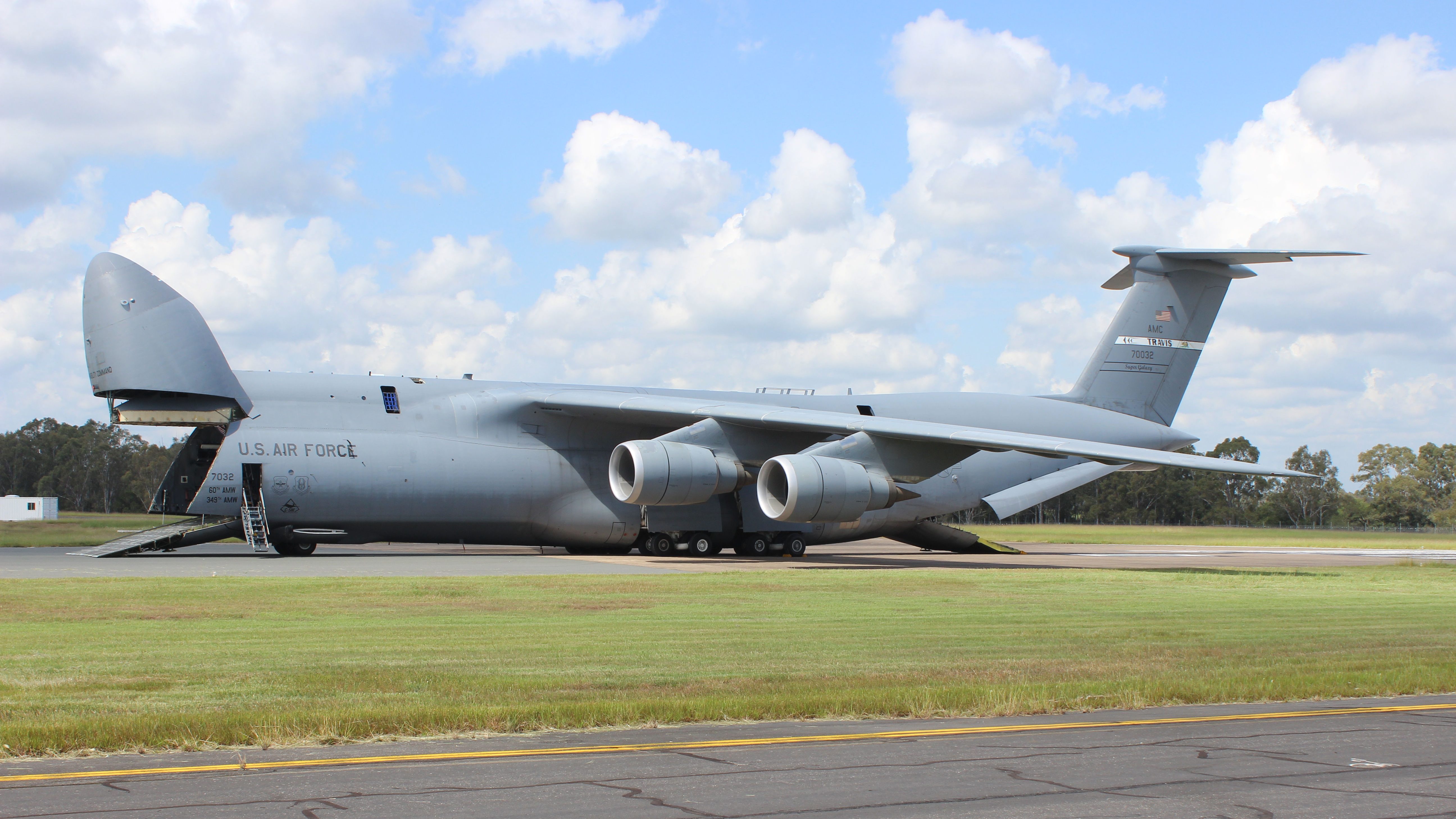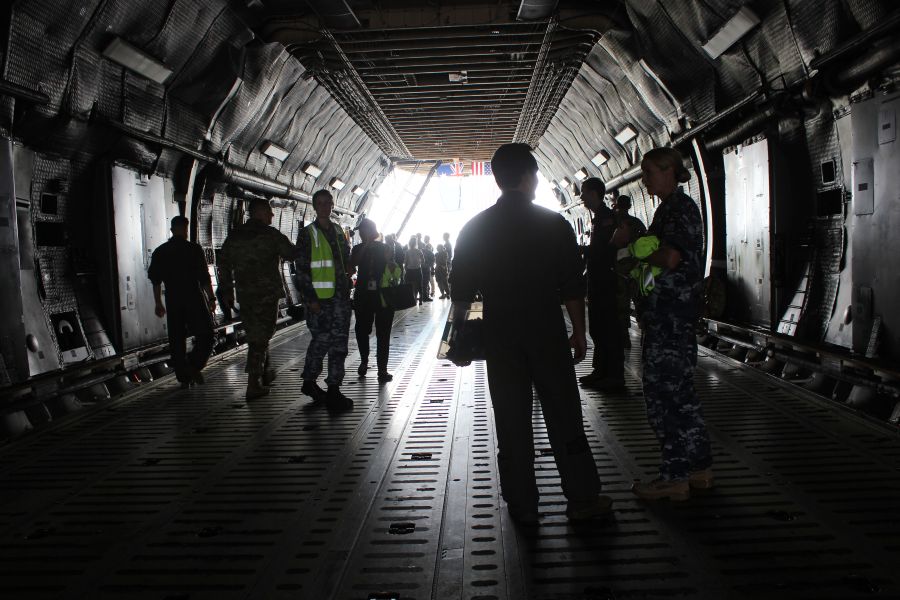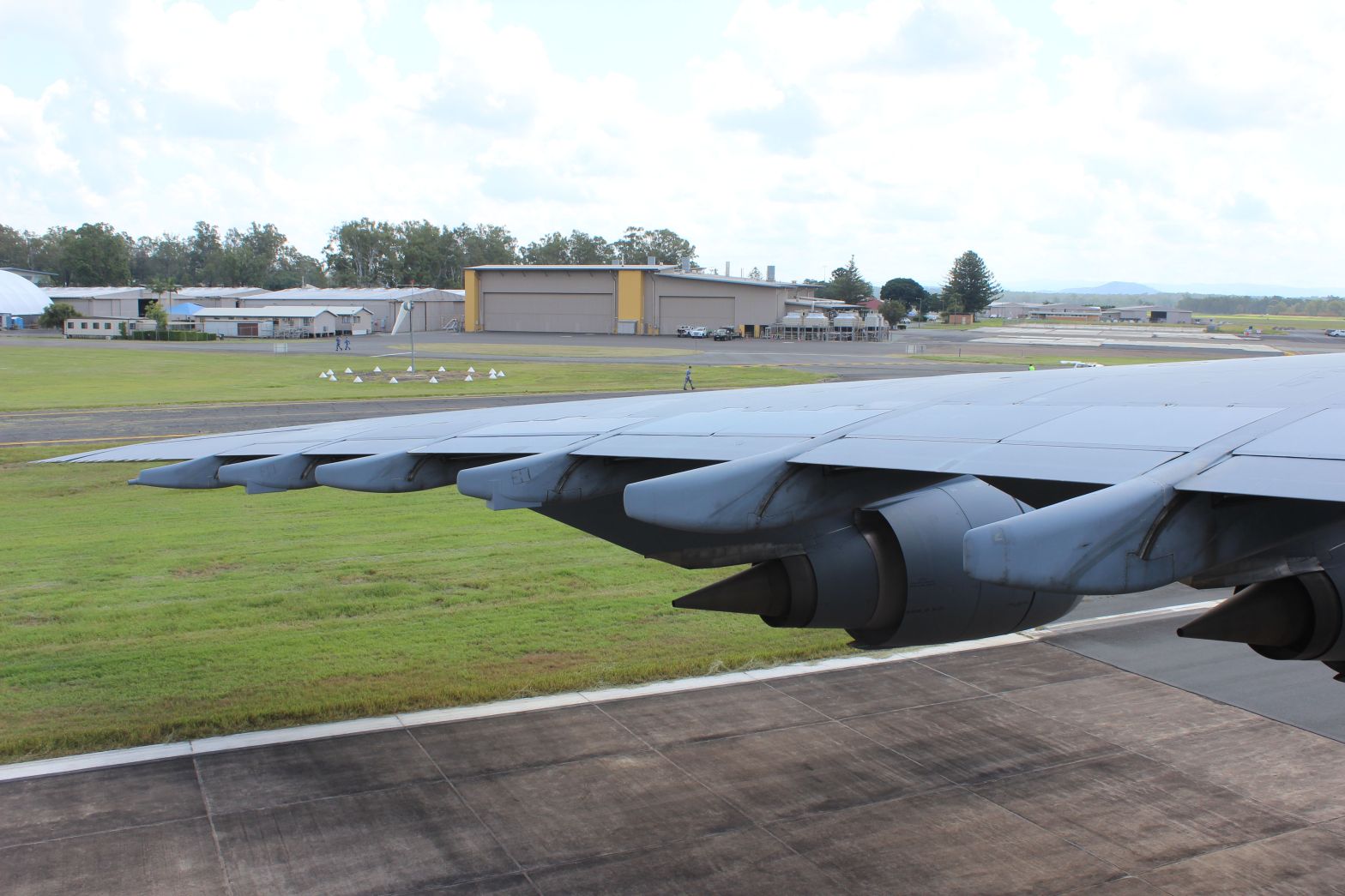Story, images by ANDREW KACIMAIWAI
THE Super Galaxy was unlike any big aircraft I had seen before; the DC-10 was my first big one followed by “Queenie” (Boeing 747).
But those aircraft feature high-set tricycle undercarriages. You board them from passenger bridges.
The C-5M was something else.

My first impression from about 1km out was how low to the ground he was (apparently, it’s called Fred). That, and how big he was. Oh, and also – the nose was up!
And he kept getting bigger the closer I came to it as part of a small media delegation who were escorted out across the tarmac to her, along with military VIPs.
To state the obvious, the Super-G is not like a Boeing 747; it hugs the ground on its 28 wheels to take on heavy loads. Fred is capable of carrying up to 127 tonnes of cargo.
The closer I got, the most I appreciated the length of the tail; it really did stick out there, longitudinally and latitudinally.

Picture: ANDREW KACIMAIWAI
Then I got to the rear ramp. The interior of the Super G surprised me when, in hindsight, it probably shouldn’t have.
The interiors was largely … well, empty. It was a hollow cylinder with two exceedingly steep ladders, fore and aft, leading upstairs. There were very narrow flip seats lining both walls of the fuselage; I was verry much in the loadmaster’s domain here.
The ladders reminded me very much of the cockpit entrances in the Bristol Freighter and AW Argossy I had visited. The stats read that the cargo compartment’s height is 4.11 metres (over 13 feet) but it felt more than that as I climbed up, careful to balance my camera slung over my shoulder.
I first went up in the aft section and found myself among seats for 75 personnel that somehow looked better than some of the seats I have flown in. There was a slightly claustrophobic sense with the roof of the fuselage so close but not oppressively so.
This section was connected to the fore section by a tunnel that was closed sooooo down I went again. Going down was definitely trickier!
Going up was a bit cramped given everyone wanted to check the cockpit but it was the forward top hatch that had my attention. The chance to poke up my head out of the top for views from a unique perspective proved irresistible. And I did just that, checking the views in all four compass points relative to the aircraft (forward was north … et al).
They were amazing views, the memories and photos of which I will long cherish.
There were more seats, a kitchen, medical bay – and of course the cockpit, with the view forward by the big nose getting in the way. The flight and crew deck again felt surprisingly claustrophobic after all the space downstairs and I could have not envied the flight crew who did the flight from California to Queensland (a 14-hour flight although I think they came via Hawaii). Almost.
It was a rare opportunity and I am truly grateful to get the chance. Even visitors to an air show wouldn’t have been given the access I was.
A big vinaka vakalevu (“thank you”) went out the RAAF and USAF personnel who made this experience happen. Fantastic stuff!
